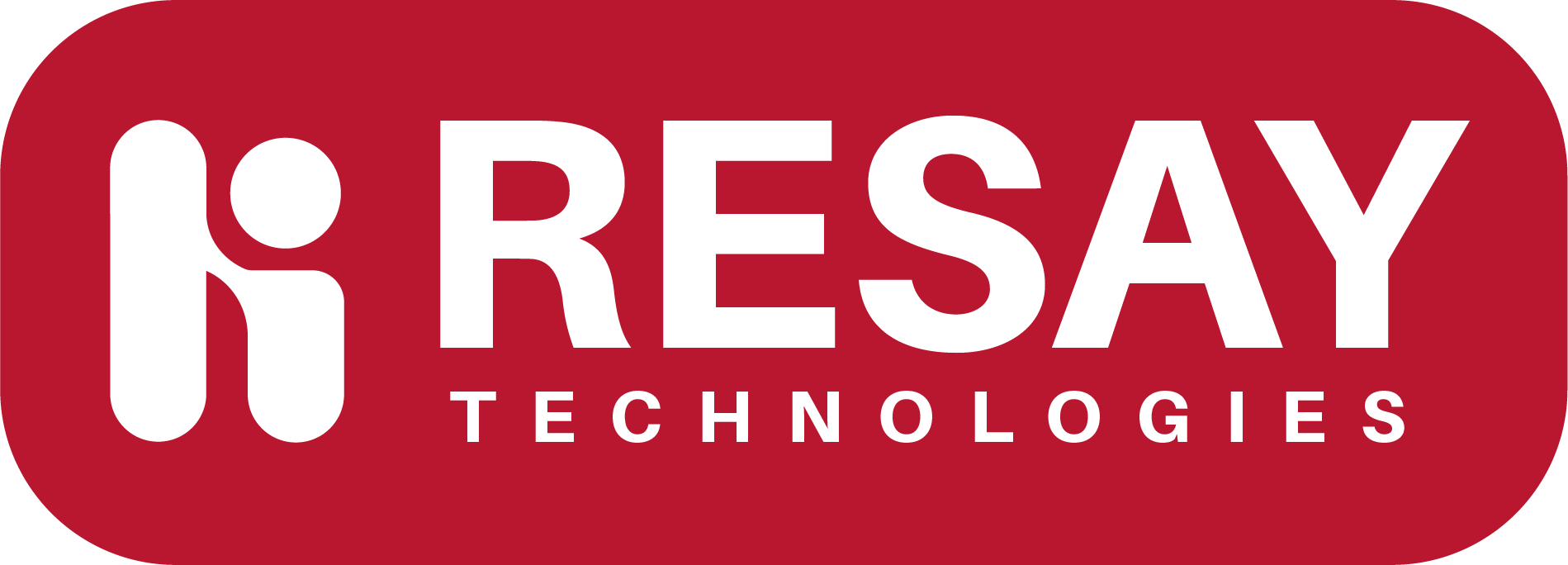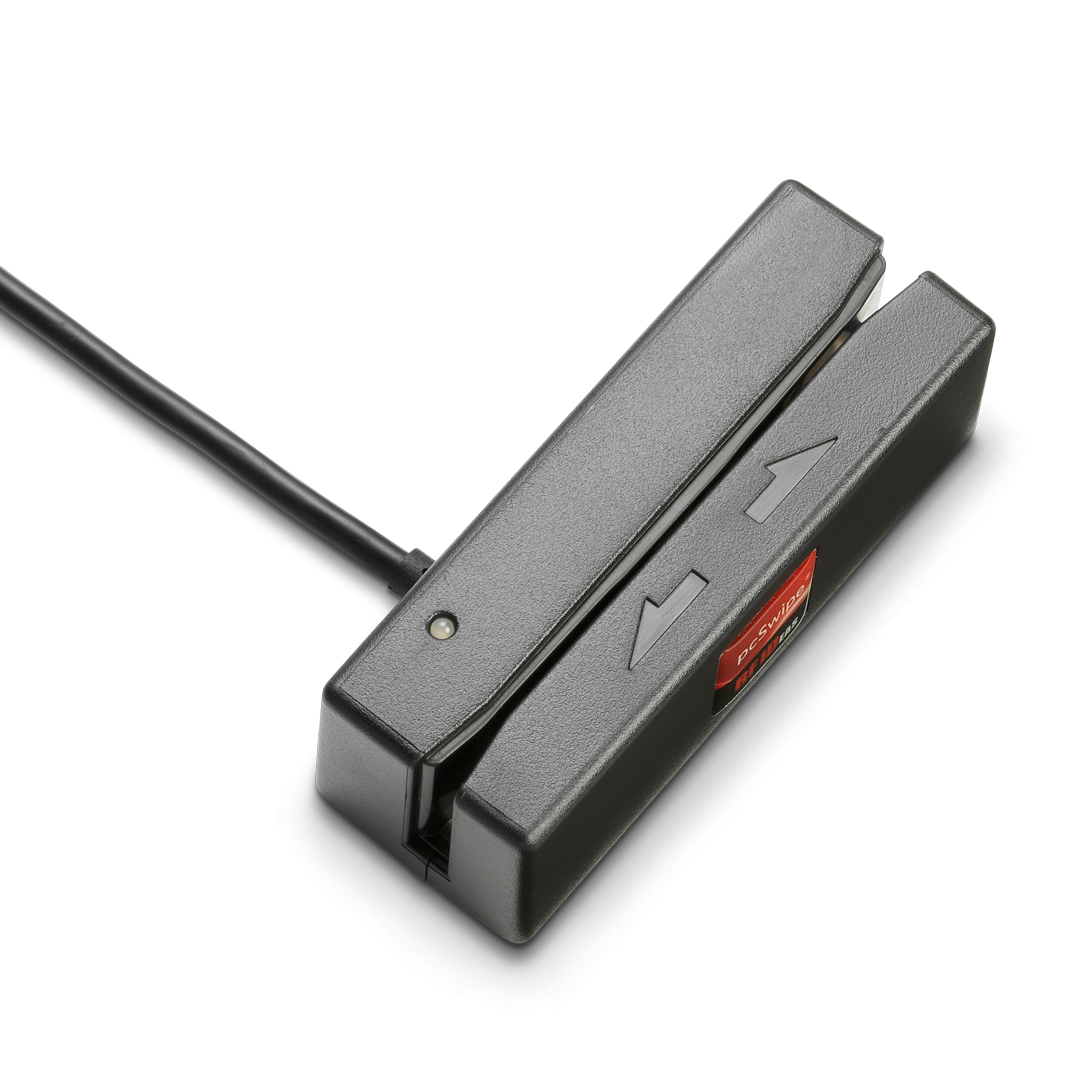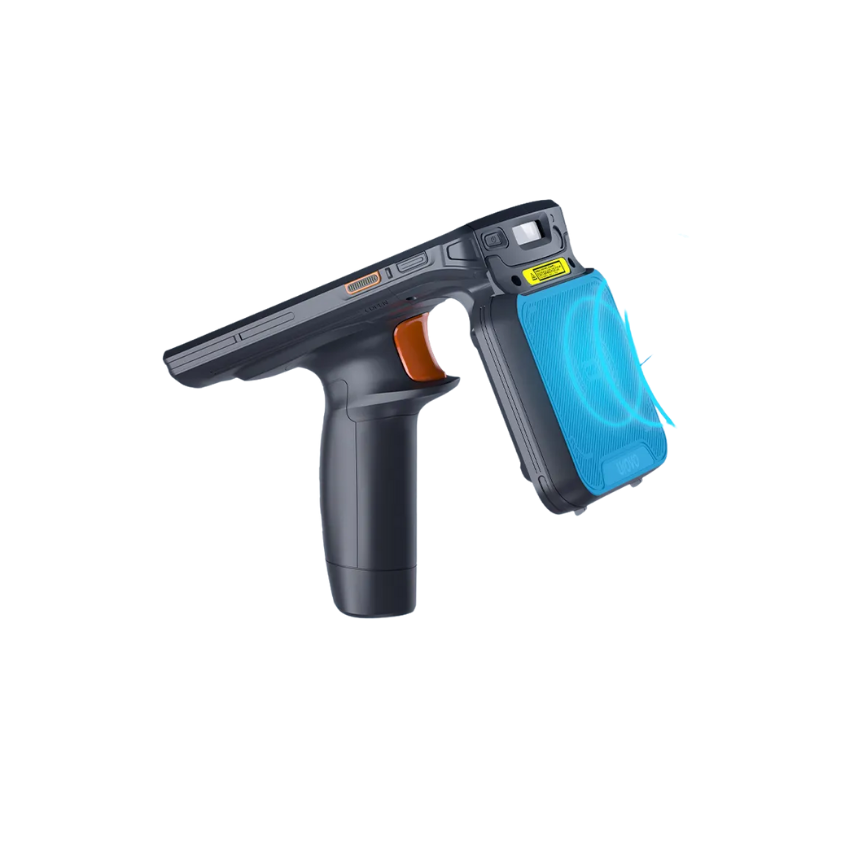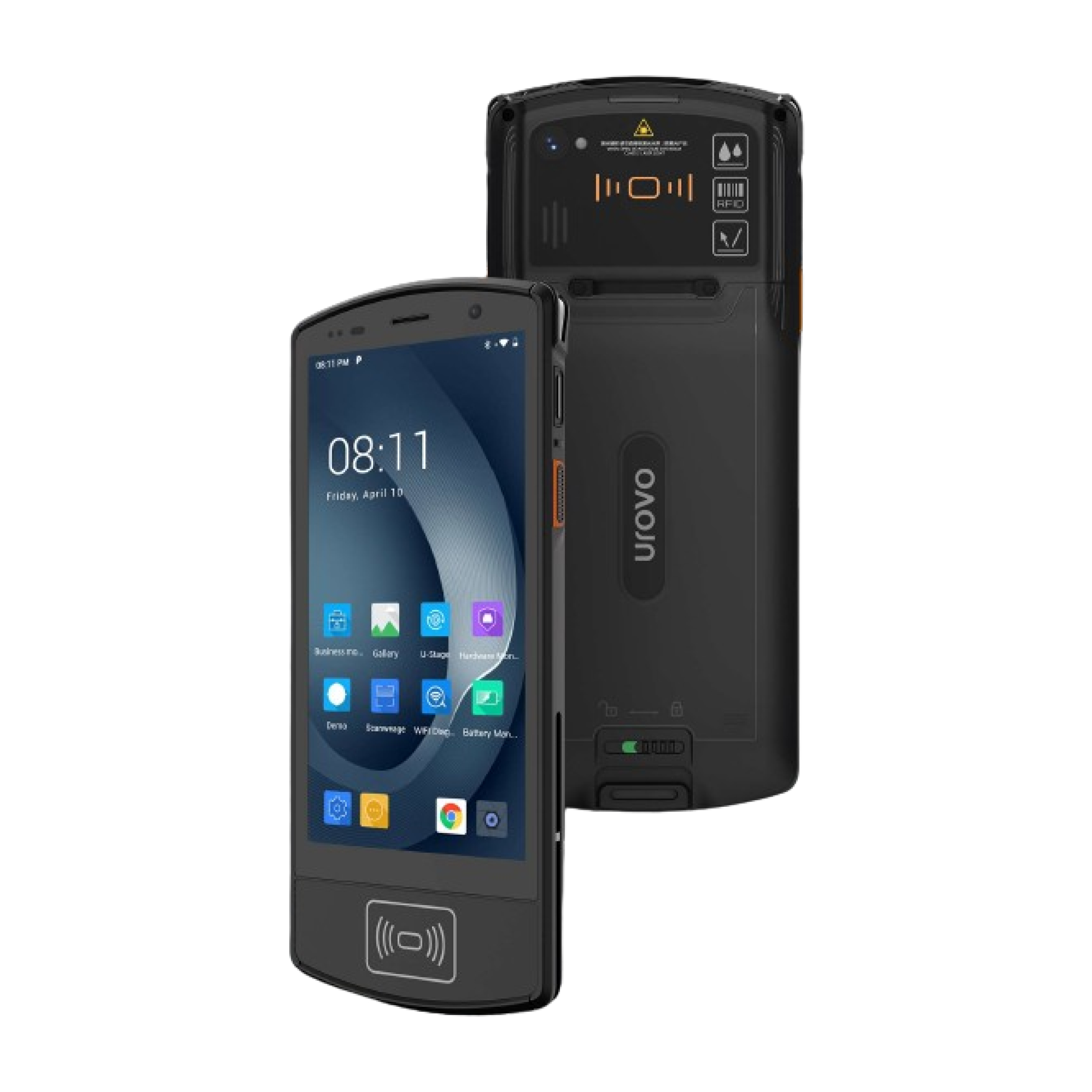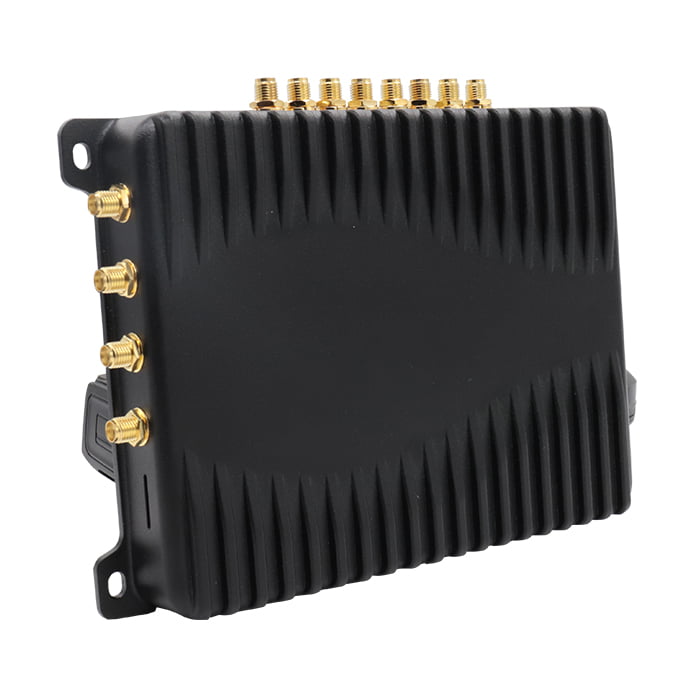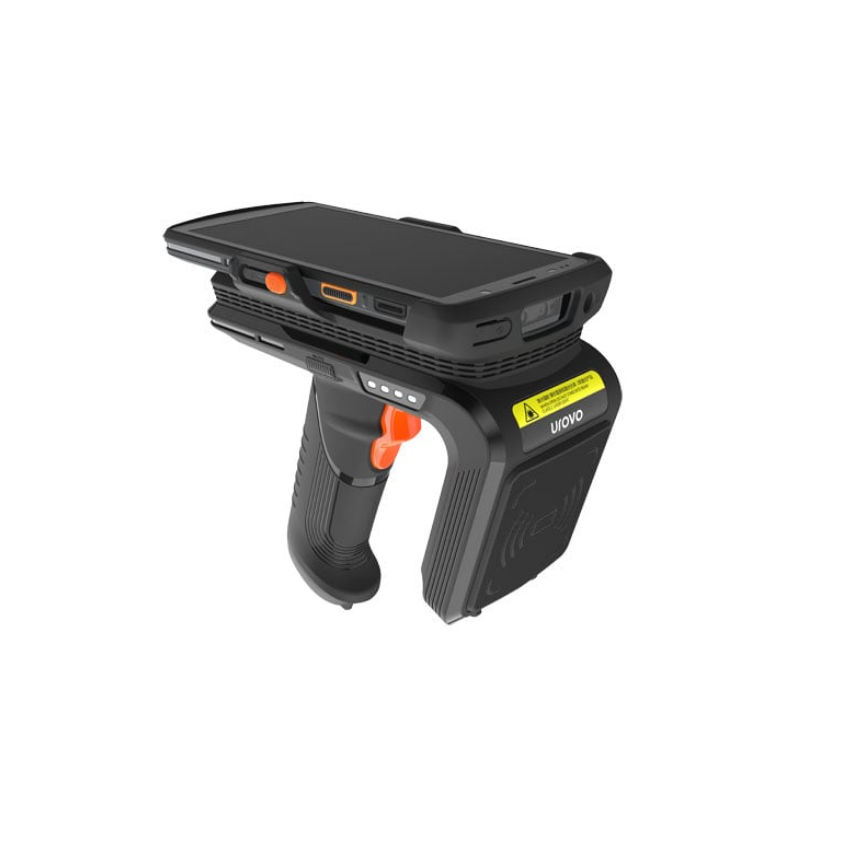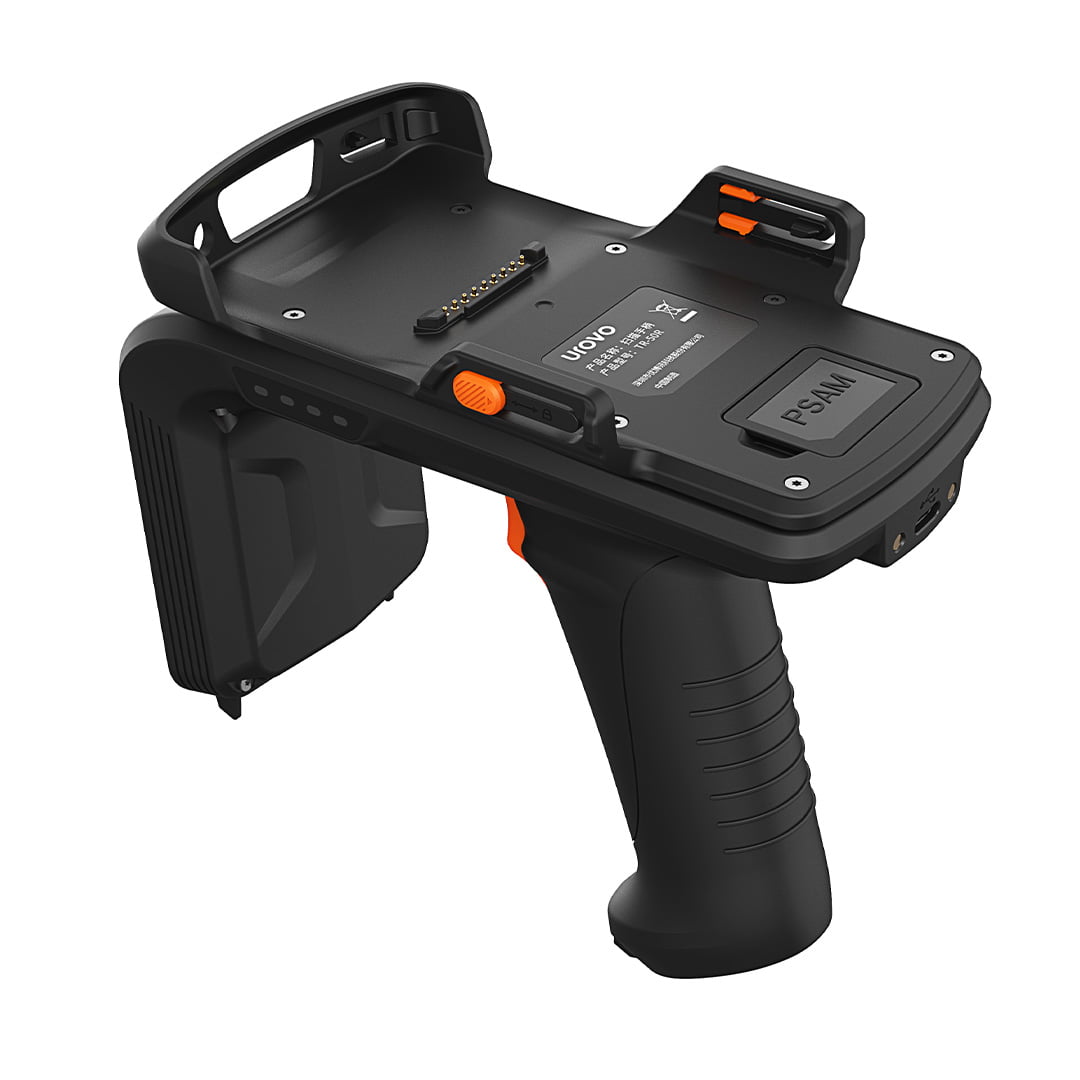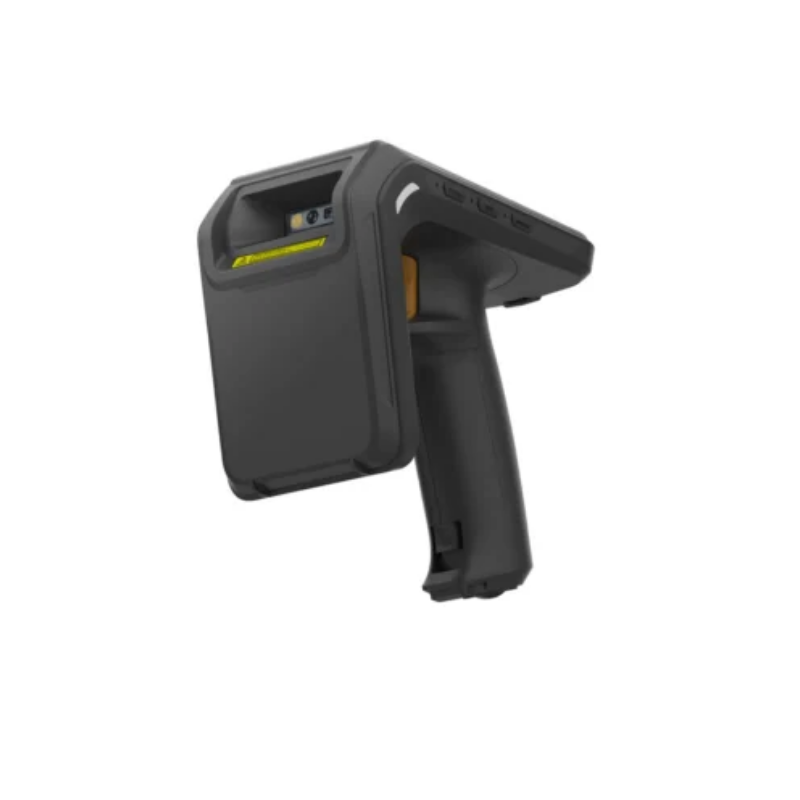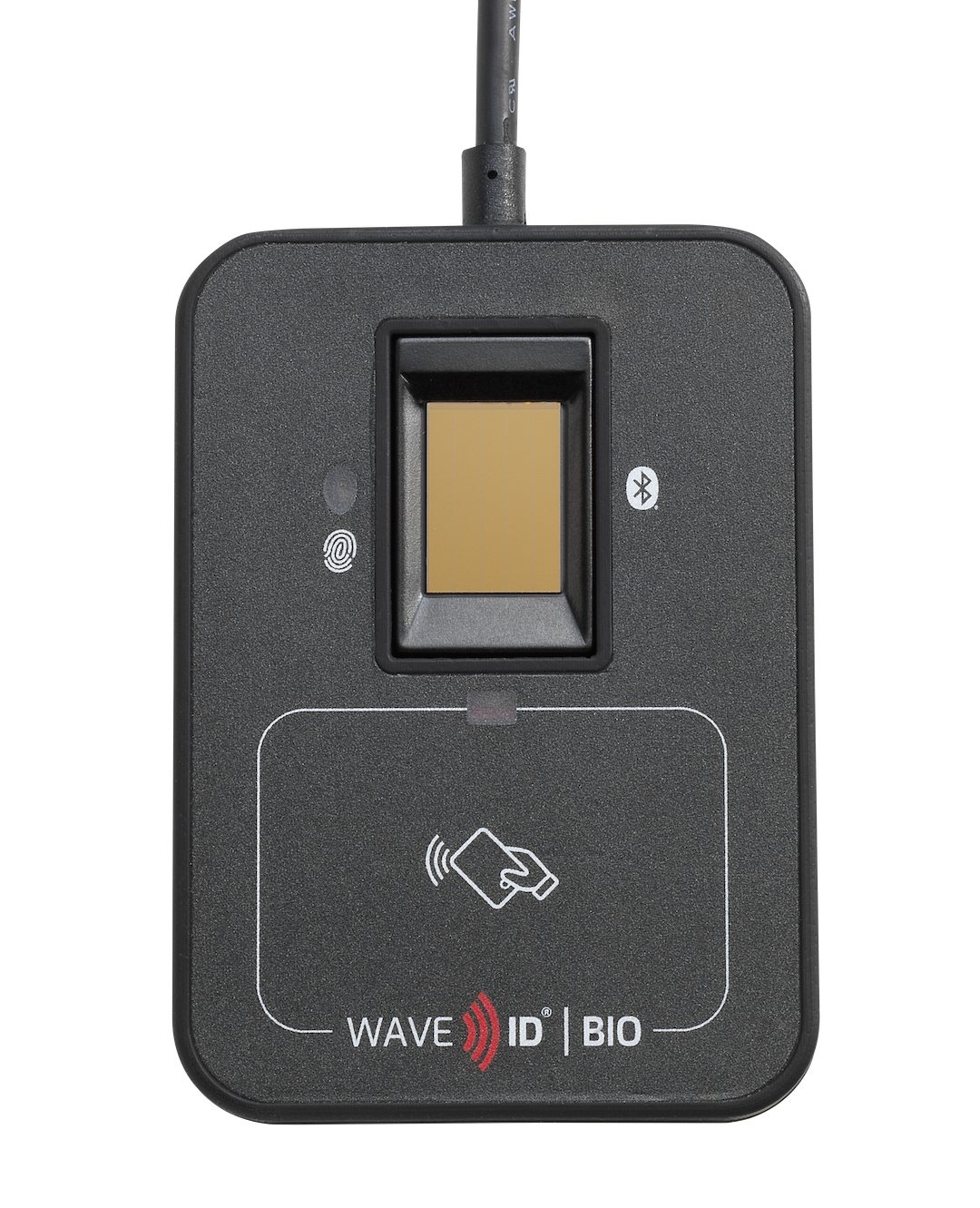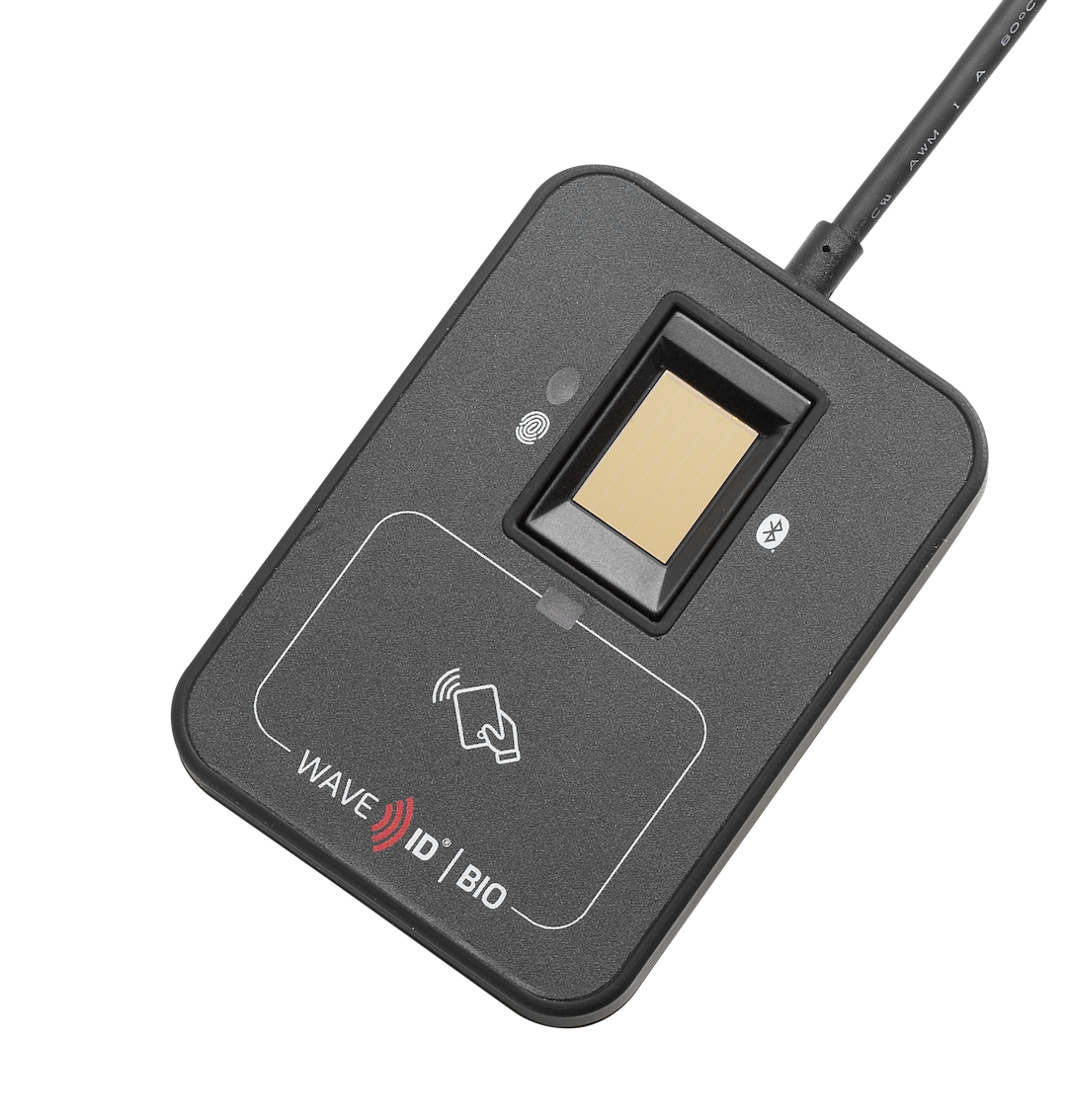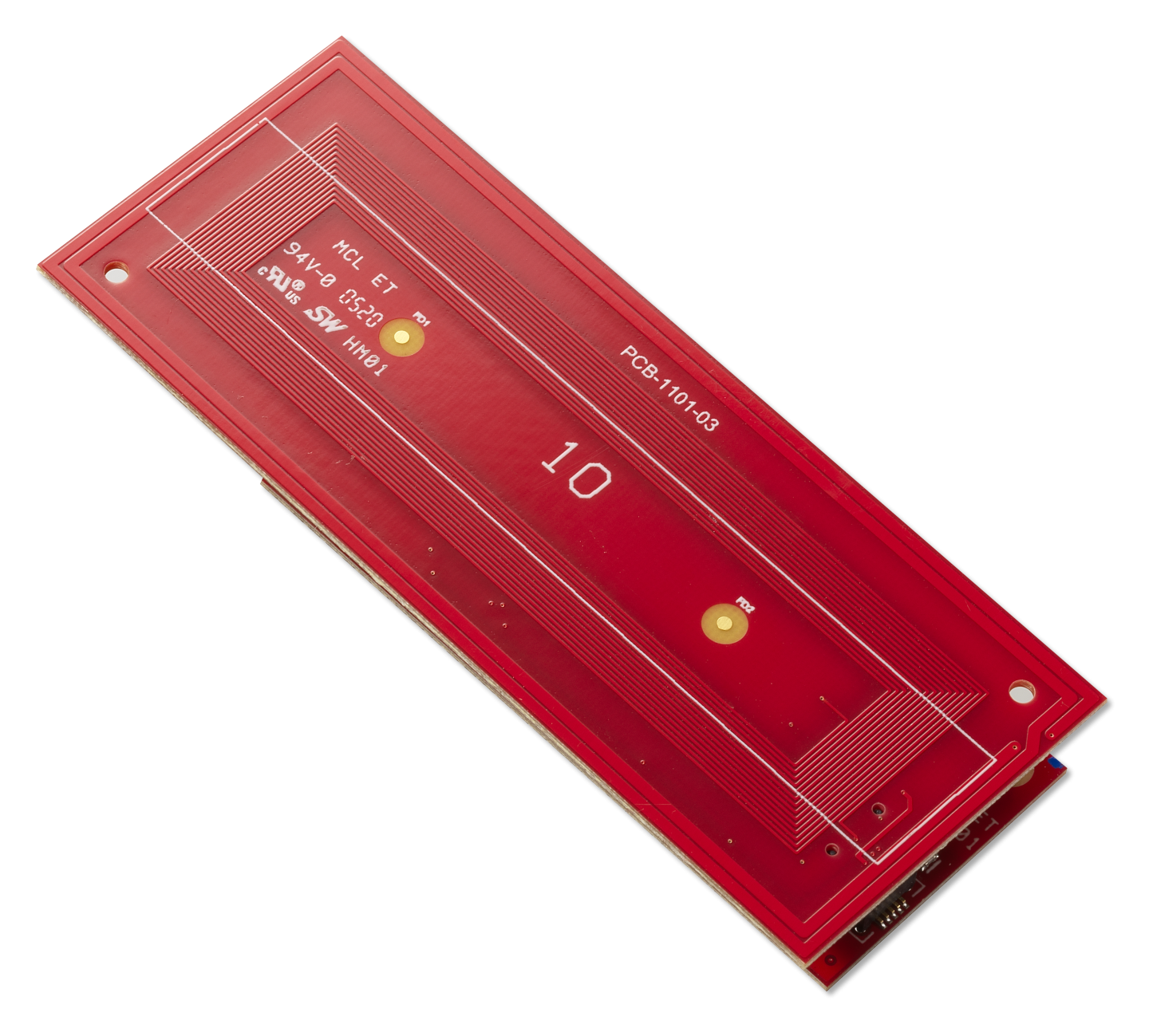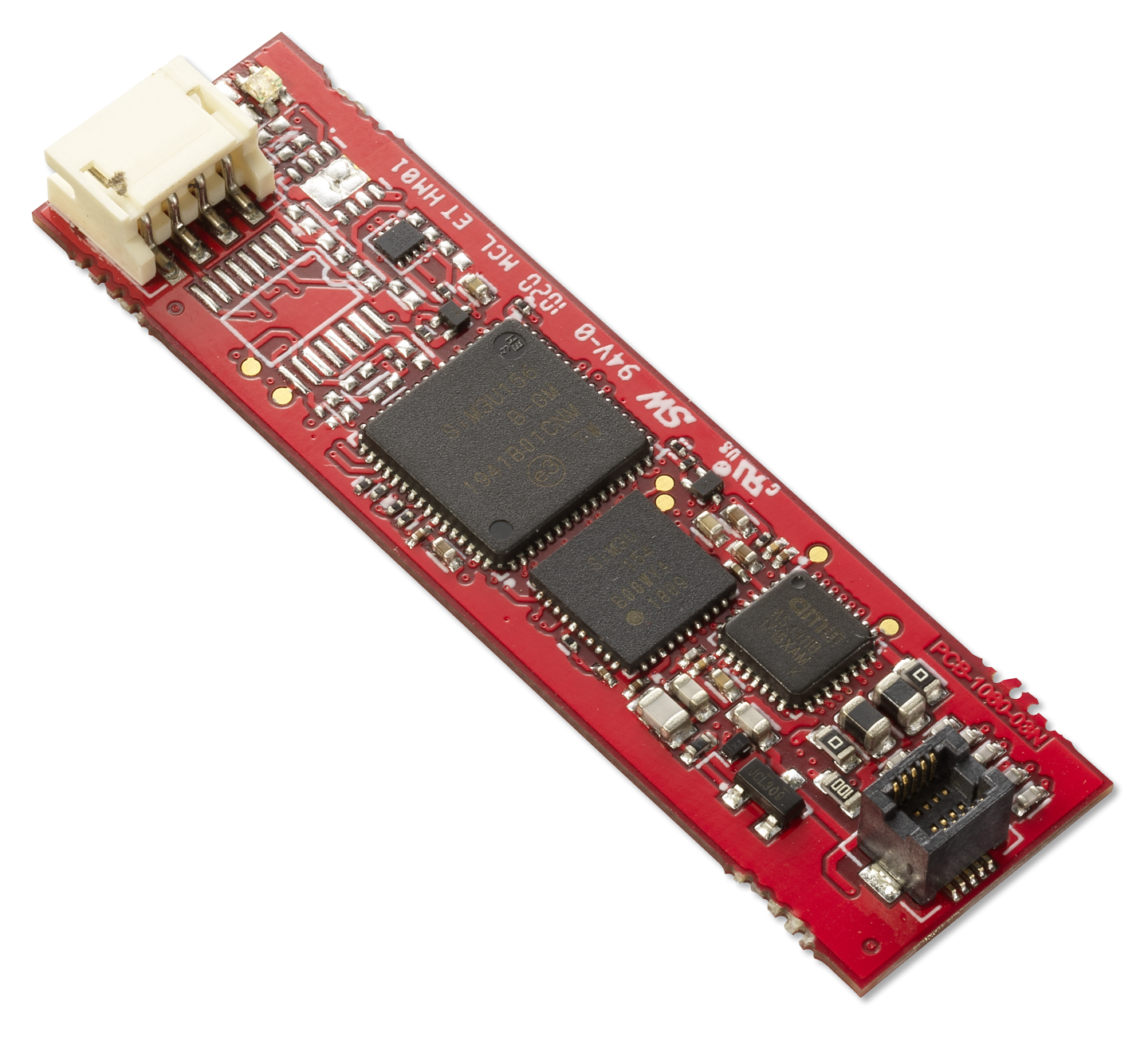pcSwipe Magnetic Stripe Reader
The pcSwipe Magnetic Stripe Card Reader for identification and enrollment is a cost-effective and efficient solution for customers wanting to leverage their existing base of?magnetic stripe card-carrying personnel. The pcSwipe magnetic stripe reader is compatible?with the billions of magnetic stripe cards in circulation worldwide. In addition to solid?construction and numerous flush mounting options, key features include bi-directional stripe?card reader capability and fast swipe speeds for maximum usability. Free software allows?customers to configure their pcSwipe as needed. The pcSwipe magnetic card reader easily?adds security to your network.

Urovo DT50D 5.7 inch Portable UHF RFID Reader
Features:
- CPU: Octa-core 2.45GHz.
- OS: Android 11/13
- Memory: RAM: 3GB ROM: 32GB / RAM:4GB ROM:64GB (optional) / Micro-SD card, Up to 256 GB
- Display: 5.7 inch display, 720*1440
- Touchpanel: Ultra sensitive capacitive touch panel Support multi-touch Works with gloves and wet fingers
- Scanning: Professional scan engine;Support international standard 1D/2D barcode;Support barcode displayed on screen and colored barcode;
- RFID(UHF): RFID tags reading, up to 1.5m/3m
- Connectivity: WWAN, Bluetooth, Wifi, GPS
- Camera: Front 5MP, Rear 13MP with flash
Urovo DT50P Lite 5.7" Android UHF RFID Handheld Reader
Urovo DT50P Lite – a lightweight yet rugged Android 13 handheld featuring Impinj E710 UHF RFID (reads 1,300+ tags/sec at ranges up to 20 m), integrated 1D/2D barcode scanning, 5.7″ glove-friendly touchscreen, removable 6,500 mAh battery, dual-band Wi‑Fi 6, 4G, BT 5.0, GPS, and IP67/1.5 m drop resistance—designed for efficient, mobile data capture in logistics, retail, and field operations.
Read moreUrovo DT51D 5.5” Touch Screen Handheld RFID Reader
Urovo DT51D is a rugged Android 12-powered handheld featuring built-in near-UHF + HF/NFC RFID and 1D/2D barcode scanning. Equipped with a MediaTek MT6833 octa-core processor, 4 GB RAM/64 GB storage (expandable), a 5.5″ glove-friendly display, and a 4,500 mAh battery, it delivers rapid tag reads (~50 tags/sec at up to ~1.5 m) and fast barcode decoding. With 5G/4G/3G/2G, dual-band Wi‑Fi, Bluetooth 5.0, GPS, IP67 sealing, and 1.5 m drop resilience, it’s built for demanding warehouse, logistics, retail, and field environments.
Read moreUrovo FR1000 Intelligent Fixed UHF RFID Reader
The Urovo FR1000 is a smart, industrial-strength fixed UHF RFID reader featuring an octa-core 1.6 GHz processor with Android 10, designed for powerful multitasking and fast data handling. Equipped with the Impinj E710 chipset and Self-Jammer Cancellation (SJC) technology, it delivers rapid, highly accurate tag reading—up to 1,300 tags per second with 99.9% precision. Features:
- Octa‑core 1.6 GHz CPU with 4 GB RAM and 64 GB storage
- Impinj E710 chipset paired with SJC tech reads up to ~1,000–1,300 tags/sec
- PoE+ (802.3at 25.5 W), DC power, Ethernet (RJ45), HDMI video output, USB, RS232, GPIO, 8 external SMA antenna ports
- dual‑band Wi‑Fi, Bluetooth 5.0, 4G, and GPS (GPS/GLONASS or GPS/BeiDou)
- Cast-aluminum housing for efficient thermal management and durability
- Supports customizable IPv6 settings
Urovo FR7000 FR7600 (6dBi)/FR7900 (9dBi) Series RFID Reader
The FR7000 is a powerful fixed UHF RFID reader featuring the advanced Impinj E710 chipset, designed for industrial and logistics settings. It ensures rapid, precise tag reading, simple installation, and dependable rugged performance. Features:
- Dimensions (6 dBi): 130 × 130 × 50 mm; 600 g
- Dimensions (9 dBi): 257 × 257 × 52 mm; 1,800 g
- Frequency: 860–960 MHz (region-configurable)
- Protocol: ISO 18000-6C (EPC C1G2)
- RF Output: Up to 30 dBm (adjustable)
- Power Input: 9 V DC or optional PoE
- Environmental: –10 to +55 °C ops; 5–95 % RH non-condensing; ESD protection ±15 kV air, ±8 kV contact
Urovo RFDT50 Handheld UHF RFID Sled
The Urovo RFDT50 is a rugged, ergonomic UHF RFID sled that seamlessly upgrades the DT50 handheld into a high-speed RFID reader. With impressive read rates, solid range, and strong durability, it’s well-suited for industrial environments where fast, hands-free scanning is critical.
Read moreUrovo RFG91 Durable UHF RFID Sled
The Urovo RFG91 is a rugged, high-speed UHF RFID sled that offers long-range scanning, rapid tag reading, and seamless pairing with Android, iOS, and Windows devices—perfect for retail, logistics, and warehouse operations.
Read moreWAVE ID Bio
Multi-factor authentication provides the highest level of security for access to healthcare medication carts, financial records, government networks and more. Biometric authentication using a fingerprint is the simplest, most convenient way to uniquely identify users wherever they go, providing the ?something you are? in multi-factor authentication protocols. For the ?something you have,? as well as for applications that require only single-factor authentication, enterprises increasingly need to support a variety of user credentials?from 125/132 kHz proximity cards to 13.56 MHz smart cards and the new generation of contactless mobile credentials. WAVE ID Bio Readers support all of these technologies in one sleek, modern device.

WAVE ID Embedded OEM Portfolio
Our next-generation OEM readers deliver a new level of flexibility and modular design for seamless integration in a wide array of products. OEMs can rapidly introduce off-the-shelf WAVE ID??authentication technologies for enhanced safety and security.
We support all single- and dual-frequency reader solutions with a collaborative approach to helping you shorten your time-to-market, lower overall development cost risks and provide end users with high-quality solutions that meet their emerging authentication needs.

RFID (Radio-Frequency Identification) and NFC (Near Field Communication) readers are devices that are designed to interact with RFID and NFC tags, respectively. Both RFID and NFC are wireless communication technologies, but they differ in their operating ranges and use cases. Here’s an overview of RFID and NFC readers:
RFID Readers:
- Operating Principle:
- RFID uses radio waves to communicate between a reader and an RFID tag. The reader sends out radio frequency signals, and when an RFID tag enters the range, it receives the signals and responds with its stored information.
- Operating Range:
- RFID technology operates over a range of distances, depending on the frequency used. There are three main RFID frequency bands: Low Frequency (LF), High Frequency (HF), and Ultra-High Frequency (UHF). LF and HF RFID systems typically have shorter operating ranges (a few centimeters to a few meters), while UHF RFID systems can have longer ranges (several meters to over 10 meters).
- Applications:
- RFID readers are widely used in various industries for purposes such as inventory management, access control, supply chain management, asset tracking, and identification in manufacturing processes.
- Types of RFID Readers:
- RFID readers can be categorized into fixed readers, handheld readers, and mobile readers. Fixed readers are typically installed in a specific location, while handheld and mobile readers provide flexibility for on-the-go applications.
- Data Capture:
- RFID readers capture data from RFID tags without the need for direct line-of-sight. This makes them suitable for applications where quick and non-contact identification is required.
NFC Readers:
- Operating Principle:
- NFC is a subset of RFID that operates at shorter distances, typically up to 10 centimeters. NFC allows for two-way communication between devices, and it is commonly used for contactless payments, data exchange between smartphones, and access control.
- Operating Range:
- NFC operates at a close proximity, and the range is limited to a few centimeters. This close-range operation is a security feature, making NFC suitable for secure transactions.
- Applications:
- NFC readers are commonly used in applications such as mobile payments, public transportation ticketing, access control systems, and data transfer between NFC-enabled devices.
- Types of NFC Readers:
- NFC readers can be integrated into various devices, including smartphones, tablets, point-of-sale terminals, and dedicated NFC reader devices.
- Data Capture:
- NFC readers facilitate the exchange of data between two devices when they are brought into close proximity. This is often referred to as “tapping” or “bumping” devices together for data transfer.
Key Considerations for RFID and NFC Readers:
- Frequency Band:
- Both RFID and NFC operate at different frequency bands (LF, HF, and UHF for RFID; 13.56 MHz for NFC). The choice of frequency depends on the specific application requirements.
- Operating Range:
- Consider the required operating range for your application. RFID is suitable for longer-range applications, while NFC is designed for close-range interactions.
- Security:
- NFC is designed with security features, making it suitable for applications like mobile payments. RFID systems may require additional security measures, depending on the application.
- Integration:
- Consider how well the reader can integrate with other systems and devices. Many RFID and NFC readers come with interfaces that allow integration with existing infrastructure.
- Use Case:
- Choose the technology (RFID or NFC) based on the specific use case and application requirements. RFID is often used for tracking and identification in industrial settings, while NFC is prevalent in consumer applications like mobile payments.
Both RFID and NFC readers play significant roles in enabling wireless communication and data transfer in various industries. The choice between RFID and NFC depends on factors such as operating range, security requirements, and the specific use case of the application.
